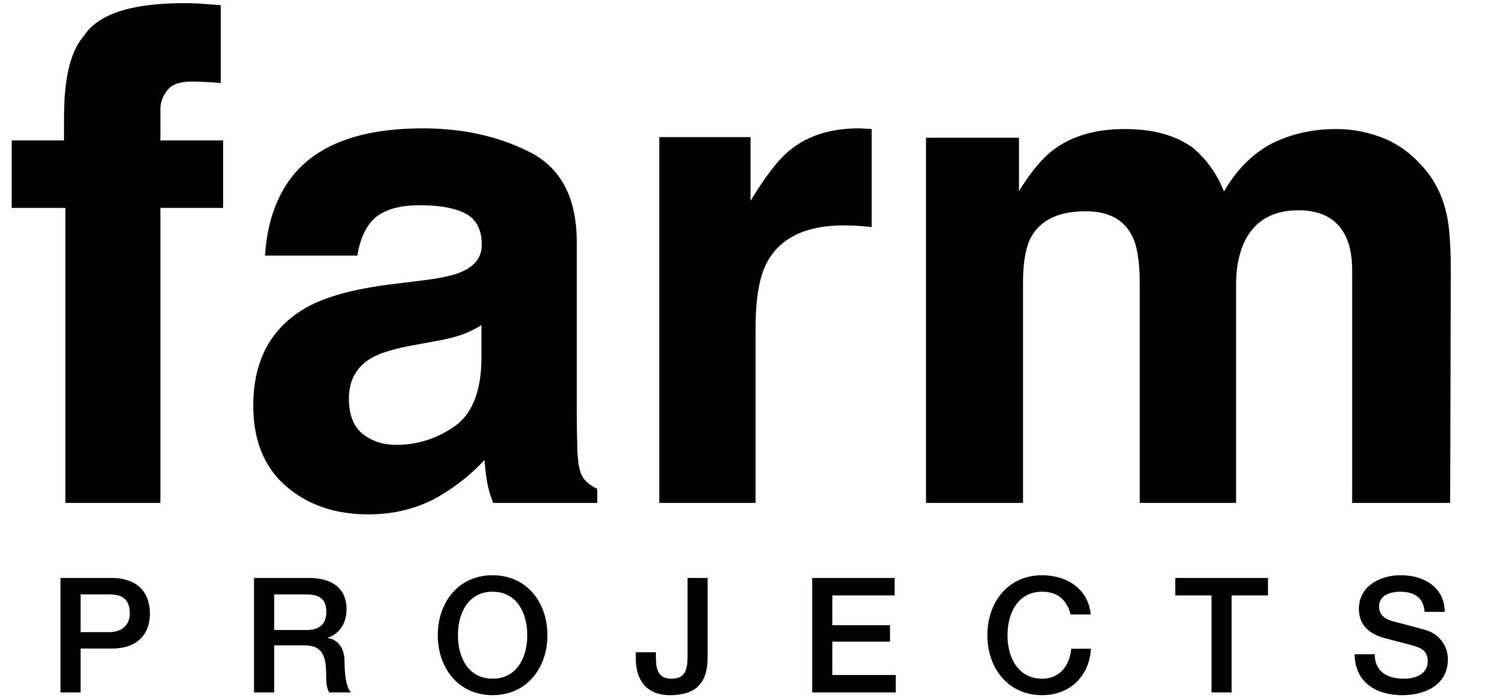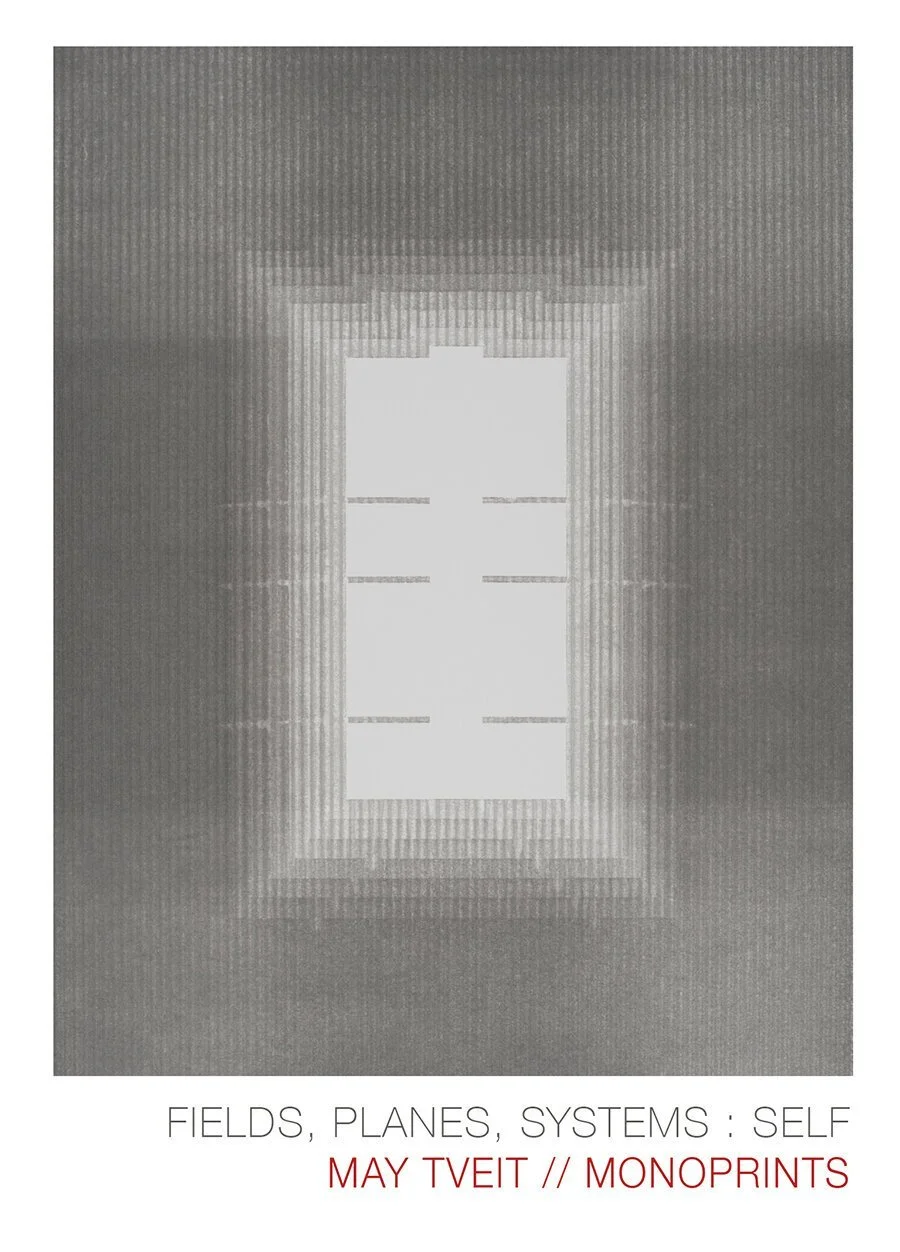MAY TVEIT - monoprints
MAY TVEIT
monoprints
july 18-august 02, 2020
Essay by:
Jeff Bergman
Director, Pace Prints
Founding Reader, Learn as Protest
Editor, Atlas
Structure
May Tveit’s monoprints, unique works on paper created using printmaking techniques, are born of material investigation. The matrix for Tveit’s monoprints are five templates for an “elemental box”. Created by the artist at the Frans Masereel Centrum printmaking residency in Kasterlee, Belgium, these monoprints are marks left by cut and scored box forms, nested within one another, inked and printed. Each elemental box form in its plan view, waiting to be built, has been constructed by Tveit. This exists first as compiled cardboard forms which are printed and then shifted in a series of moves that reveal new geometry and optical depth.
There are recombinations, variations in ink and the noise of mechanical production in these prints. Their matrix bears the mark of their fabrication and refers more broadly to manufacturing. A stripe appears from the corrugation of the cardboard, an artifact of its material nature. Tveit uses a system of her own device, taking each of these forms and revealing both a positive and negative at center, finding ways to over print to create darkness, light and depth. Tveit’s serial progressions evolve into a type of play in which each form becomes a portal revealing an interior light or a dark passage. Subject It is no great leap to see the flattened cardboard product, before it becomes a form bound by its utility, and know it as a box. The ubiquity of these forms, built and unmade, is unquestionable. A box, and the flattened after product to be recycled, lives in our homes and door jambs with us like air or dust. In art, this box has become a subject, and sometimes symbol, for the Conceptual and Minimal art movements. The form’s impersonal nature or anonymous fabrication is a distant cousin to the work of May Tveit’s monoprint series.
Tveit’s sculpture and printmaking is worked by hand, personalized to find interior space and modulation in line and color. The presence of the “elemental box”, disassembled and laid out in plan view, provides the armature to consider interior and exterior space. A plan for a box is essentially architecture boiled down to form alone. It is important to take note of the built world, and its presence in these prints and in Tveit’s work.
Synthesis Tveit’s monoprints are intimate in detail and space. Though their presence is marked by clear mechanical creation, the space they create draws you close so that the work’s scale directly refers back to the viewer. The gradation reads as ink rather than graphite (which the artist uses in her “Drop Unit” sculptural series) or some other obviously hand applied mark making. The information in each mark is a record, a memory of the printed forms. Tveit’s choice to print, rather than draw, highlights the concept of production.
Our culture must build to survive, must fabricate to build. We produce unconsidered materials, yielding the cast off product or bi-product so as to keep moving toward the future. The artist has chosen a building block for her art for its material nature and its conceptual value as a form. It is such that all that we contain could never be held within a simple box, and yet nearly always that becomes the case. Our mirrors, our homes, our coffins all contain us and yet those of us that are free rarely consider ourselves confined. Our objects, whether art or rudimentary product, point to our everlasting inclination to build a world.
Tveit allows us to dwell in a world of form that may contain us or support us. The paper that presents the image is itself a box containing meaning, though the artist and viewer may have completely different experiences of that meaning. If we allow the artist to speak through the images we find escape, a deep dive to somewhere beyond the plane. That dive may be into light or dark. It is left for the viewer to know what space they contain, and what is contained in the space.


